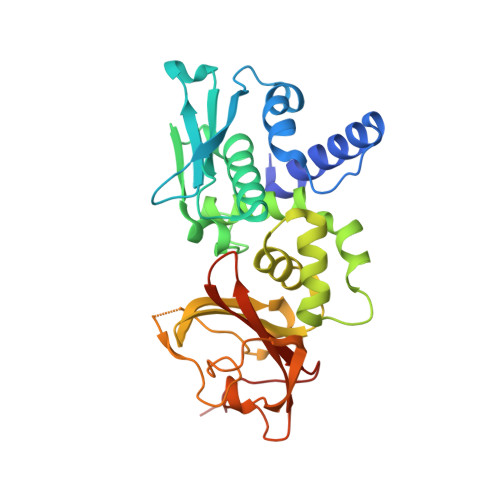A conserved signaling pathway activates bacterial CBASS immune signaling in response to DNA damage.
Lau, R.K., Enustun, E., Gu, Y., Nguyen, J.V., Corbett, K.D.(2022) EMBO J 41: e111540-e111540
- PubMed: 36156805
- DOI: https://doi.org/10.15252/embj.2022111540
- Primary Citation of Related Structures:
7T5T, 7T5U, 7T5V, 7T5W - PubMed Abstract:
To protect themselves from the constant threat of bacteriophage (phage) infection, bacteria have evolved diverse immune systems including restriction-modification, CRISPR-Cas, and many others. Here, we describe the discovery of a two-protein transcriptional regulator module associated with hundreds of CBASS immune systems and demonstrate that this module drives the expression of its associated CBASS system in response to DNA damage. We show that the helix-turn-helix transcriptional repressor CapH binds the promoter region of its associated CBASS system to repress transcription until it is cleaved by the metallopeptidase CapP. CapP is activated in vitro by single-stranded DNA, and in cells by DNA-damaging drugs. Together, CapH and CapP drive increased expression of their associated CBASS system in response to DNA damage. We identify CapH- and CapP-related proteins associated with diverse known and putative bacterial immune systems including DISARM and Pycsar antiphage operons. Overall, our data highlight a mechanism by which bacterial immune systems can sense and respond to a universal signal of cell stress, potentially enabling multiple immune systems to mount a coordinated defensive response against an invading pathogen.
Organizational Affiliation:
Department of Cellular and Molecular Medicine, University of California, San Diego, La Jolla, CA, USA.

















